ایلخانه، یک آپارتمان ۴ طبقه و شامل ۳ واحد مسکونی است برای سه خانواده از یک فامیل. زمین پروژه از شمال، در مجاورت قطعه «تودلی» واقع است که دسترسی آن به خیابان، از طریق کوچهای باریک در غرب پروژه صورت میگیرد. در شرق پروژه، زمینی واقع است که عمق آن به اندازه مجموع عمق زمین ایلخانه و همسایه شمالی آن است و در نتیجه، پیشآمدگی بنای واقع در همسایه شرقی، عقبتر از مرز حوزه قابل ساخت پروژه قرار میگیرد. بنابراین، از لحاظ کالبدی، ایلخانه بنایی است با چهار نما. اما به لحاظ ضوابط شهری، با توجه به اینکه بنا از منتهیالیه شمالی زمین شروع میشود، در غرب به کوچهای یک متری میرسد و در شرق به حیاط ملک همسایه، تنها حق نورگیری و ایجاد بازشو در نمای جنوبی را دارد. در نتیجه، ایلخانه به لحاظ تایپولوژیک، یک آپارتمان in-fill با چهار نما است.
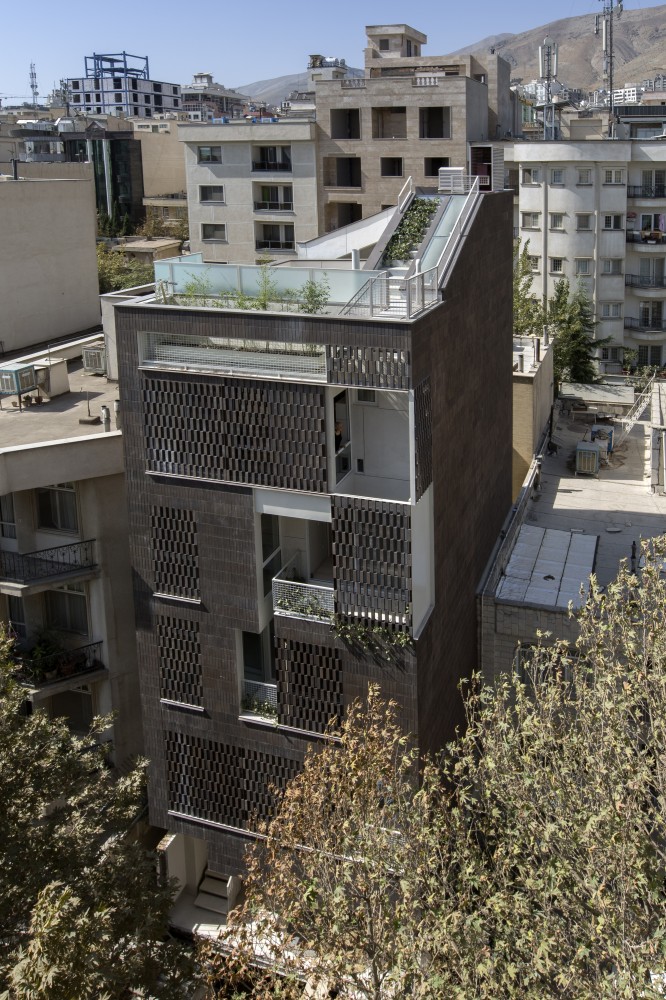
تورفتگیهای نمای جنوبی، موجب ایجاد مجموعهای از فضاهای نیمهباز شده است که اکثر فضاهای داخلی به جای رویکردن به کوچه، به این پاکتهای سبز نگاه میکنند. در بخشهایی از نما، پوستهای نیمهشفاف و متخلخل، شامل چهارچوبی فلزی و پوششی آجری، و بعضاً قابل حرکت بر روی نما، امکان تغییر موضعی پوسته جنوبی را، به لحاظ دید و نورگیری، مهیا میکند. در جداره شمالی نیز که تنها منظر ملک تودلی محسوب میشود، حفرههایی سبز تعبیه شدهاند که ضمن ایجاد منظر برای ملک تودلی، امکان نورگیری غیرمستقیم ایلخانه را فراهم میکنند.

در جداره غربی و در امتداد کوچه دسترسی ملک تودلی، یک شکاف سرتاسری امکان نورگیری غیرمستقیم کلی را برای ساختمان مهیا میکند. در عین حال، فضاهای داخلی عمیق پروژه از حفرههای کوچک جداره غربی نورگیری جانبی دارند. طراحی کنج جنوب شرقی پروژه نیز به نحوی انجام شده است که پسرفتگیهای کالبدی امکان دسترسی غیرمستقیم به منظر شرقی را، در چهارچوب ضوابط شهرداری که دید مستقیم به شرق را منع میکند، مهیا کرده است.
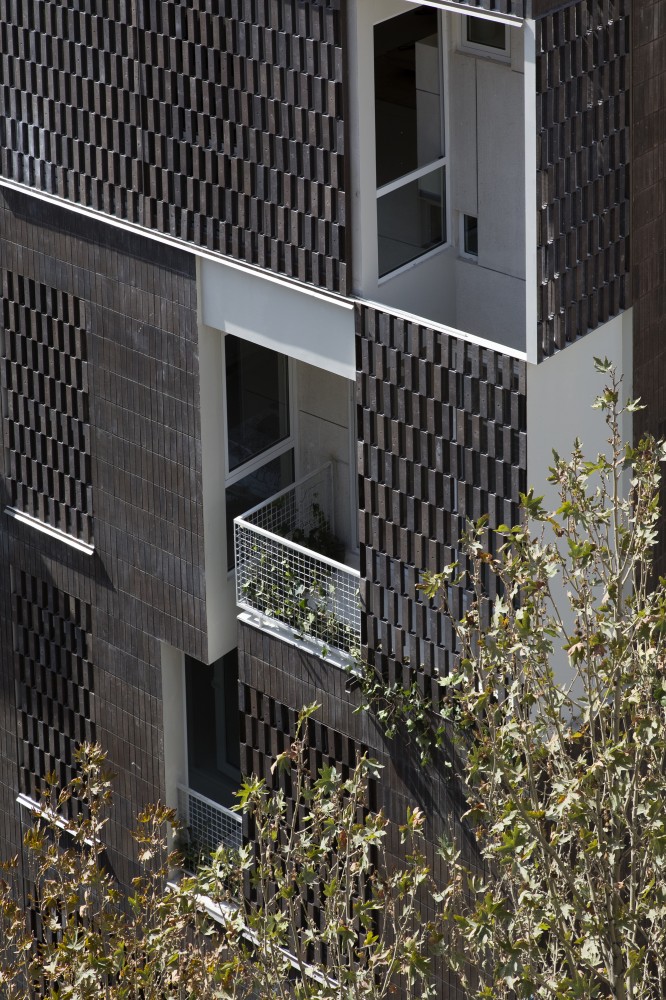
مقطع ساختمان به صورت مجموعهای از سطوح شکسته پیوسته و سطوح معلق ناپیوسته طراحی شده و شکستهای در مقطع، امکان قابل سکونت شدن بخشهایی از سطوح عمودی را ایجاد کرده است. به علاوه، کل جداره غربی از داخل، به صورت مجموعهای از طاقچهها، به اندازه و ابعاد اشیاء زندگی روزمره، طراحی شده که در نتیجه، سطح عمودی این جداره نیز به سطحی قابل سکونت تبدیل شده است.

پلکان مجموعه، به واسطه مجموعهای از نورگیریهای غیرمستقیم از شمال و غرب، و همچنین پاکتهای سبز جداره شمالی، به فضایی مطلوب و خوشکیفیت تبدیل شده است که امکان تعامل اجتماعی خانوادههای ساکن در ساختمان را فراهم میکند. با گرتهبرداری از نظام فضایی خانههای حیاط مرکزی، فضاهای داخلی آپارتمانها در شمال ساختمان، به این مجموعه پلکانی و نیمهباز و پُرنور مینگرند.
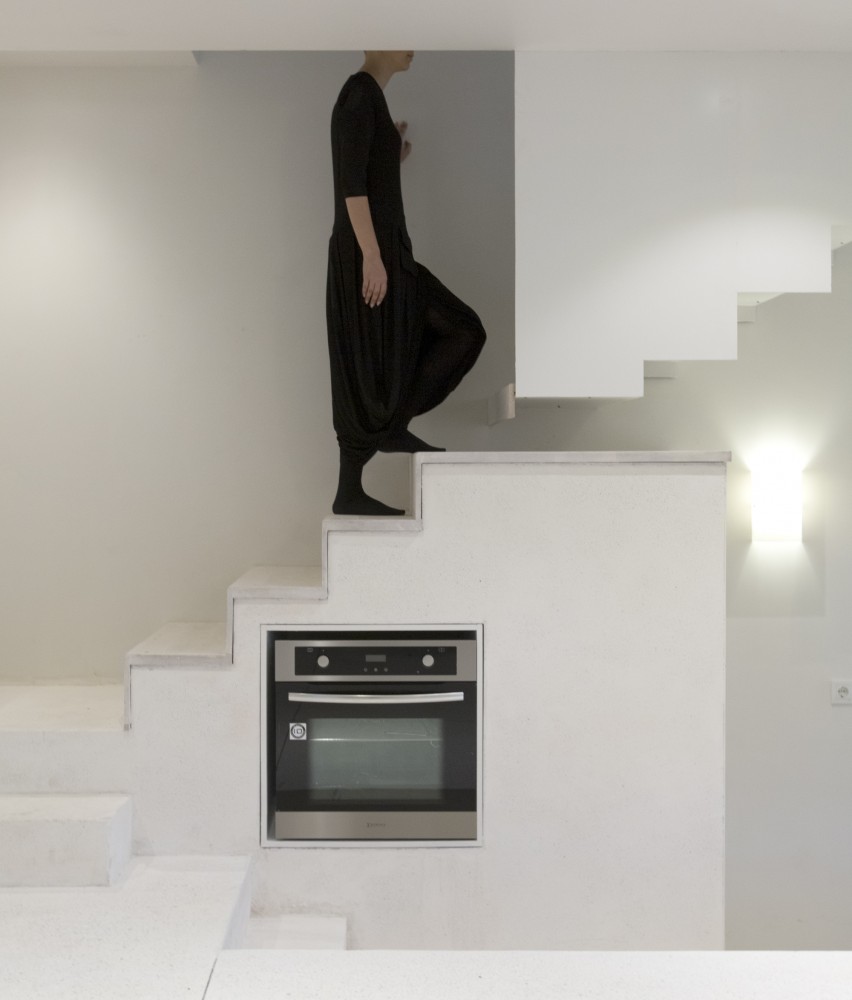
ایلخانه
معمار: گروه طراحی شیفت (تغییر روند طرح) (رامبد ایلخانی، نشید نبیان، درنا مصرزاده)
موقعیت: تهران، ایران
تاریخ: ۱۳۹۳
مساحت: ۵۰۰ مترمربع
وضعیت: ساختهشده
کارفرما: احمد نبیان، ابوالقاسم نبیان
همکار طراحی: دیبا دیانی
ارائه و گرافيک: گلناز جمشیدی، محسن خانمحمدی، ملیشا ملوشویچ، مهرآسا چمنی حیدری
طراح تاسیسات مکانیکی: علی غنیزاده
طراح تاسیسات الکتریکی: علی پیلتن
مديريت اجرا: گروه اجرای شیفت (شرکت تغییر روند اجرا)، ابوالقاسم نبیان
همکاران اجرا: حسامالدین رئوفپناه، علیرضا انصاری امین
عکس: پرهام تقیاف، گروه طراحی شیفت
ﺟﻮاﻳﺰ: رﺗﺒﻪ دوم ﮔﺮوه مسکونی آپارتمانی جایزه ﻣﻌﻤﺎر ۱۳۹۳
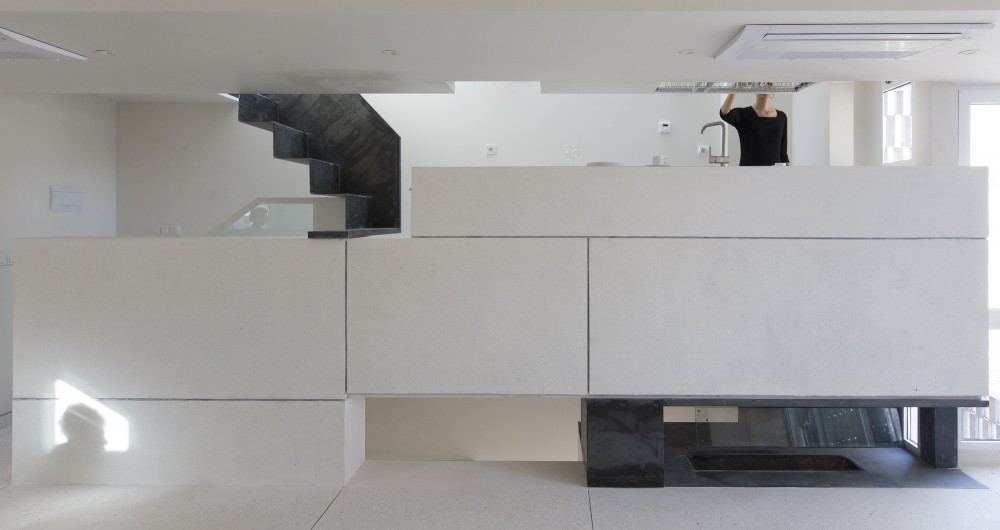
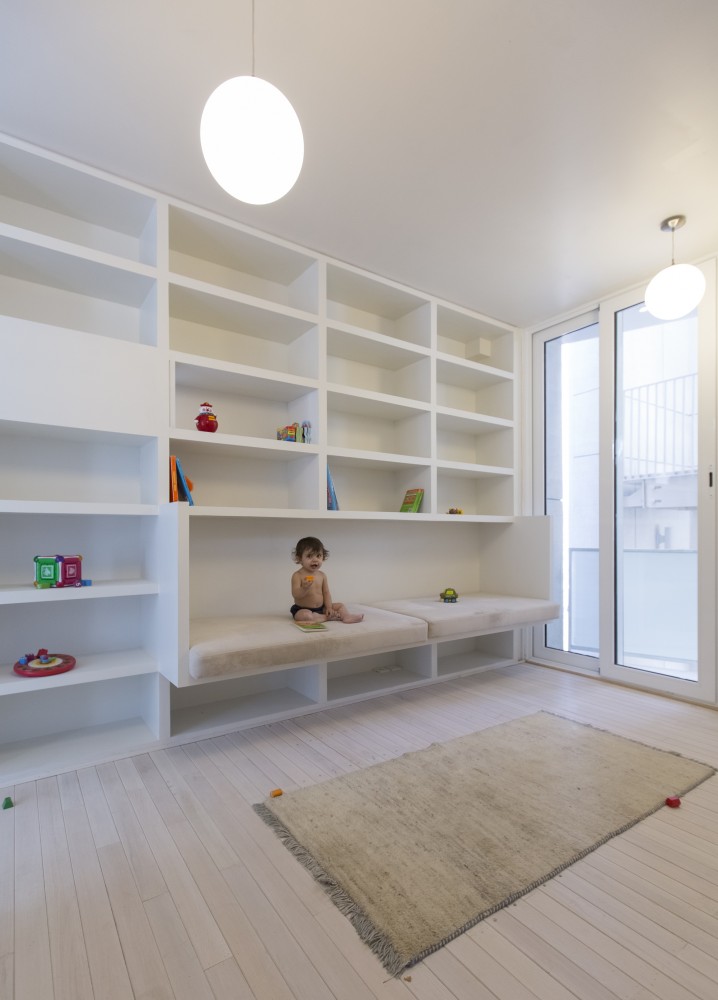
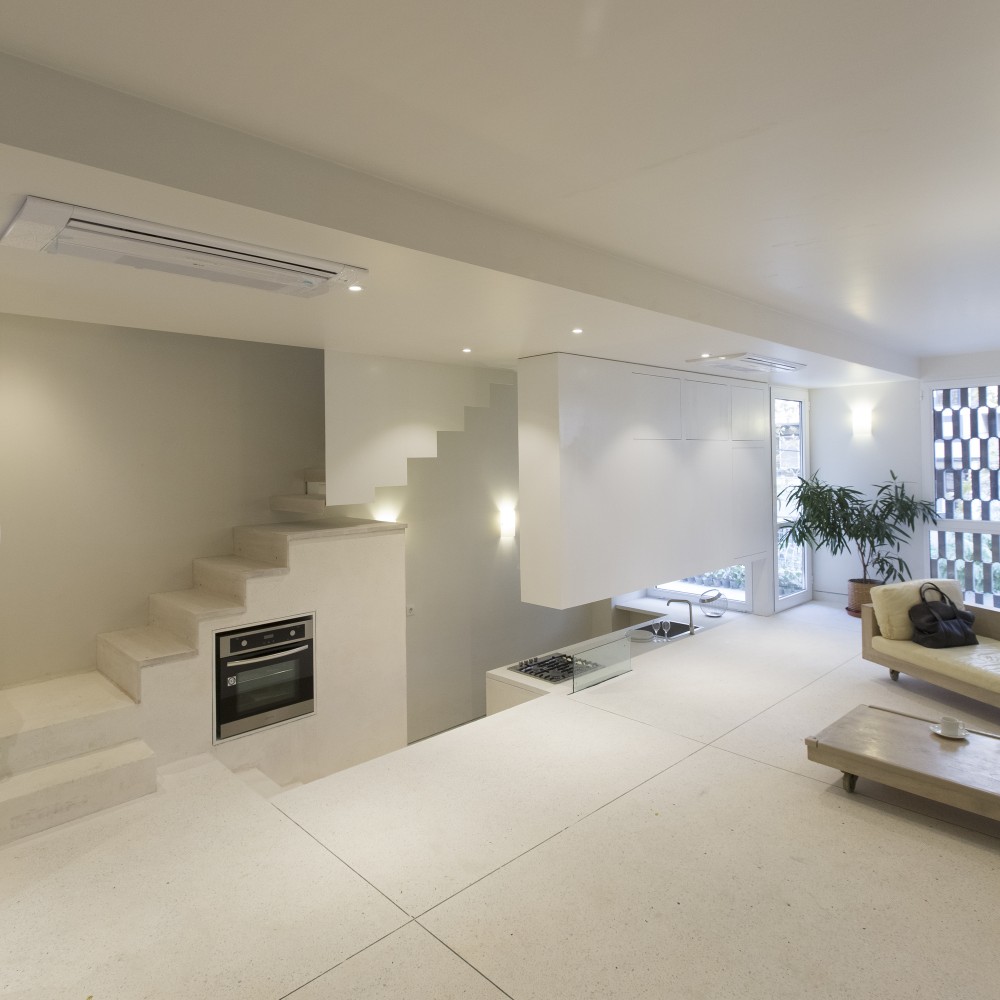
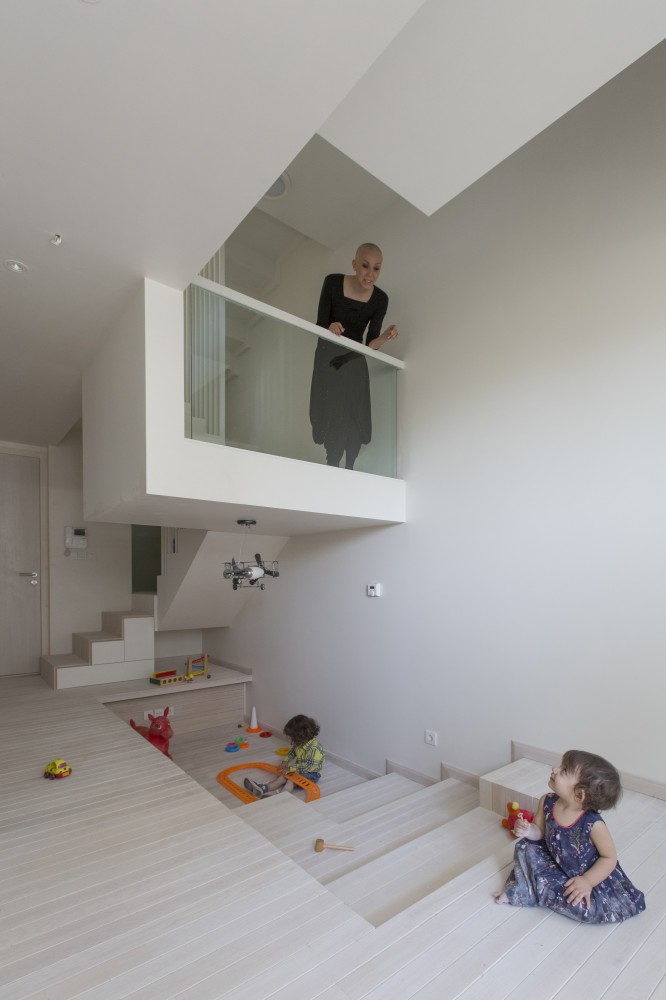
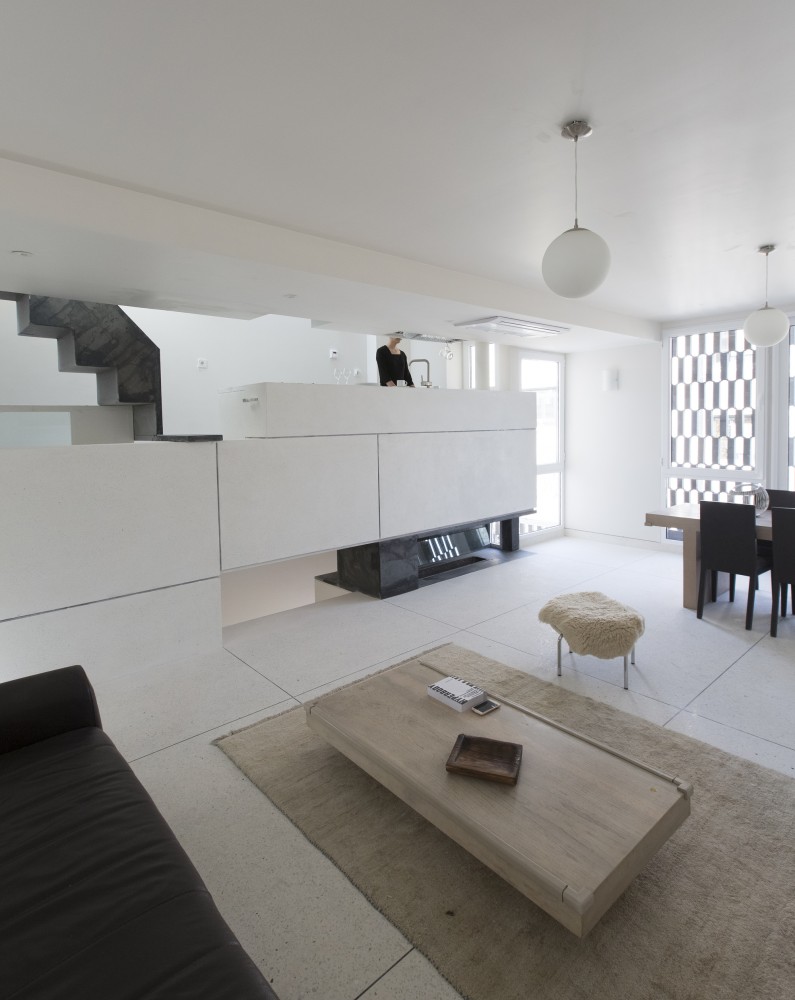
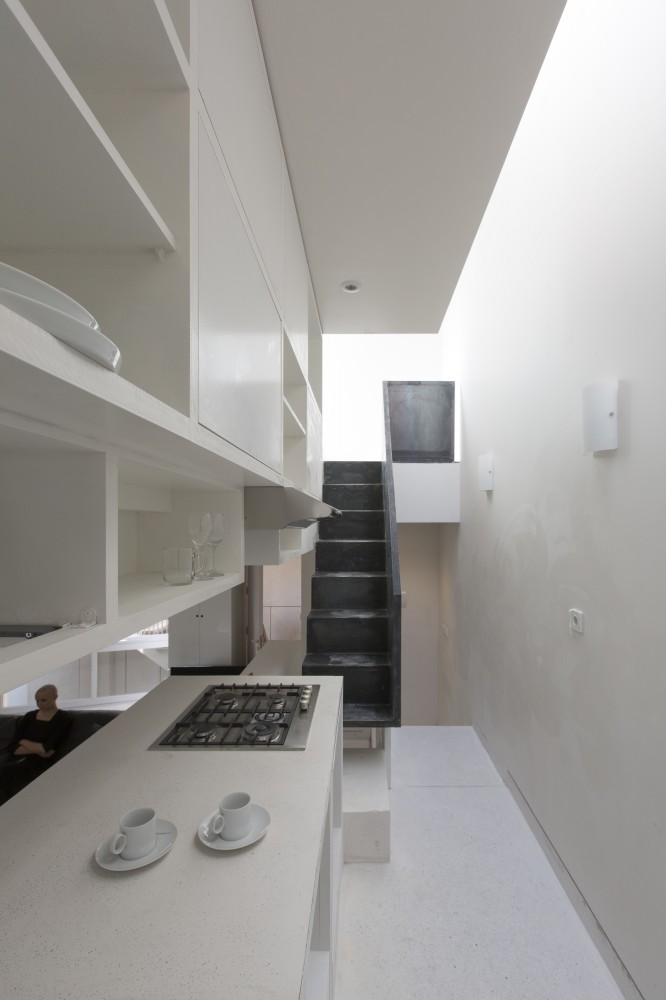
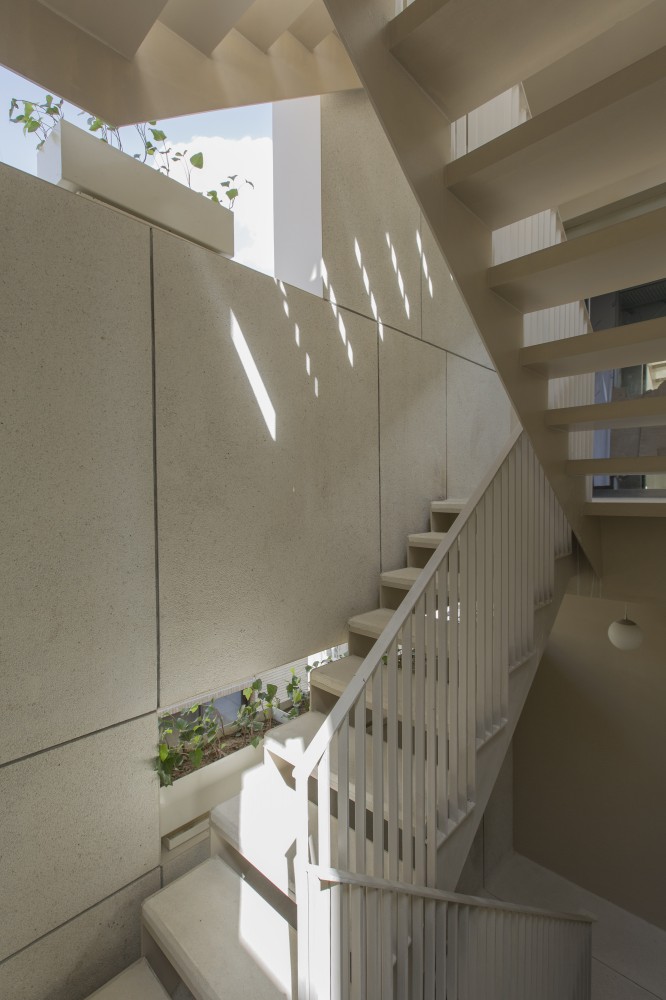
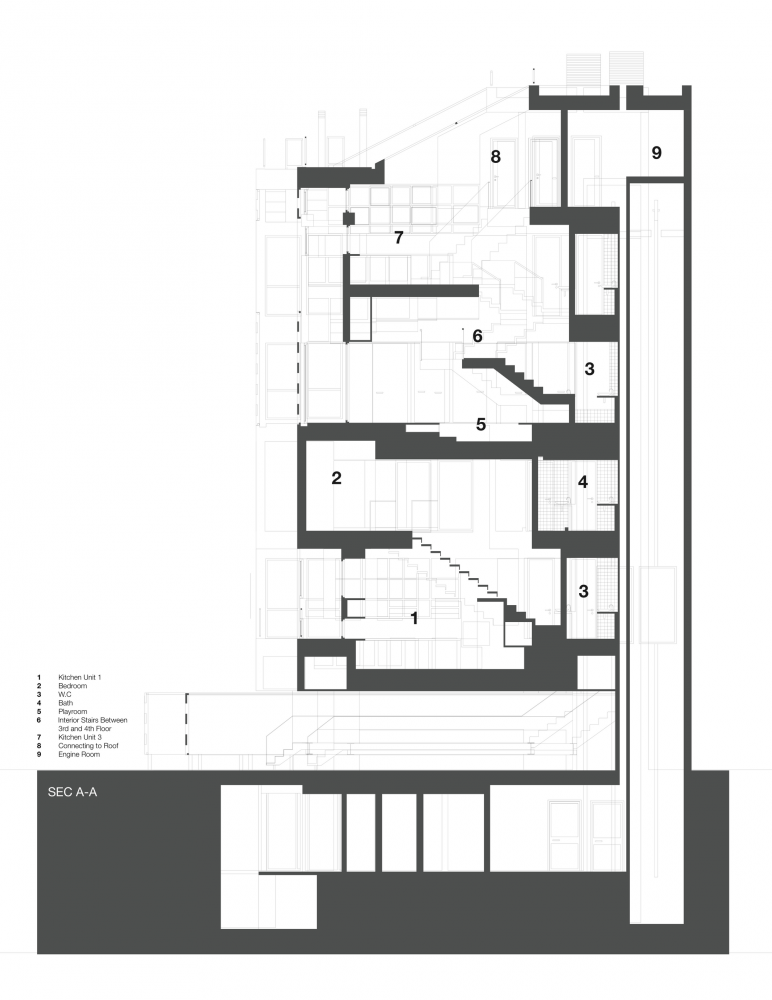
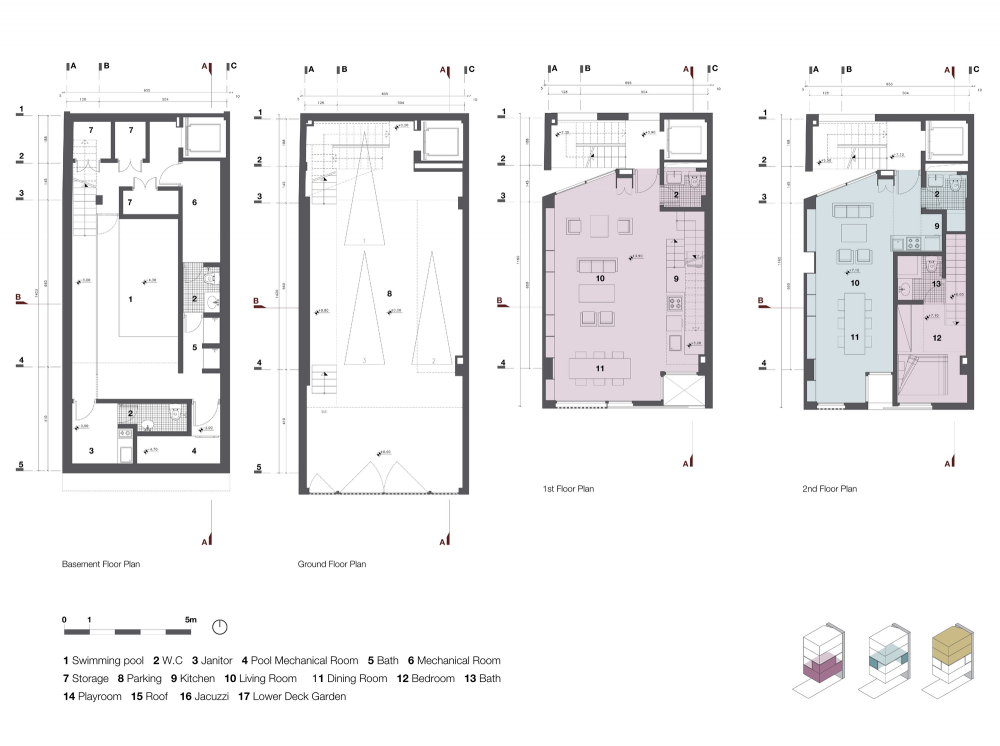

گالری تصاویر :
:Eilkhaneh / [SHIFT] Process Practice
Architects: [SHIFT] Process Practice
Location: Tehran, Tehran, Zaferaniyeh, Iran
Design Team: Rambod Eilkhani-Nashid Nabian-Dorna Mesrzadeh
Area: ۵۰۰.۰ sqm
Year: ۲۰۱۴
Photographs: Parham Taghioff
Design Associate: Diba Dayani
Mechanical Consultant: Ali Ghanizadeh
Electrical Consultant: Ali Piltan
Constrouction: [SHIFT] Process Practice,Abol-Ghasem Nabian
Construction Associates: Hesamodin Raoufpanah,Alireza Ansari Amin
Presentation & Graphic: Golnaz Jamshidi – Mohsen Khanmohamadi – Milica Milosevic – Mehrasa Chamani Heidari
From the architect. Tribe House is our try in re-evaluating the lost values of Iranian domestic space. During the twentieth century, Iranians were rapidly modernized without actually understanding or going through the essential steps of modernity. Certain paradigms of domestic life was lost in this transition. In the capital, the city of Tehran, the city was rebuilt substantially in the span of a century. The two-story homes were substituted with four to five-story apartment buildings and urban life style was modified accordingly.
Certain traditions in conception and erection of domestic space was lost in this process, including the connection of the house with the garden, and the intrinsic complexity of interior spaces that was the product of well-crafted sectional and planar connections.
Tribe House examines the possibility of designing for real homes within the framework of erecting an infill apartment.
Tribe House is a four-story building that houses three residential units for members of one big family. The lot of the project meets an inner lot in the north that its street access is limited to a 1 meter wide alley along the western border of our project. In the east, the neighboring lot has a depth that is equal to the sum of the depth of our project’s lot and the northern neighbor. This means that the mass of the building in the eastern lot will never cover the eastern facade of our project. This is due to the zoning bylaw in Tehran that exacts a maximum buildable envelope of 60% of the depth of the lot plus 2 meters. Hence, our project ends up having 4 facades, whereas according to the zoning bylaws it is considered an infill! In designing the Tribe House, we have tried to explore the potentials of such unique typology: an infill with four facades:
In the southern façade, the volumetric composition of a series of spatial pockets that are the result of localized extrusions and intrusions of the structural roof plates has created a series of connected balconies. Most of the interior spaces that are located at the southern part of the building look into these balconies laterally as opposed to opening up to the street. Theses connected balconies are envisioned as little green pockets. In parts of the southern façade, a semi-transparent and porous brick wall functions as a second skin. The brick shades are partially operable, allowing for transformation of the façade composition, in terms of access to view and natural light, based on desires of the occupants.
The northern façade is punched with a series of openings with installed flower boxes that creates a vegetated view for the inner lot in the north. This punched green wall is the only view that the residence of the inner lot have from the outside world. The punched northern façade also allows for ample natural light for the staircase of the building.
n the western façade and along the narrow access alley of the neighboring inner lot, a series of small holes offer the possibility of indirect access of the interior spaces to natural light for places that are located in deeper part of our project. Along the series of punched holes, an elongated gap allows for direct access of the staircase and the southern interior units to natural light. These openings are taking shape in constant negotiation with the limiting zoning bylaws.
منبع : archdaily
امتیاز
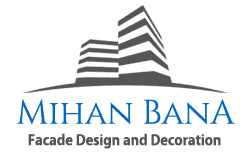

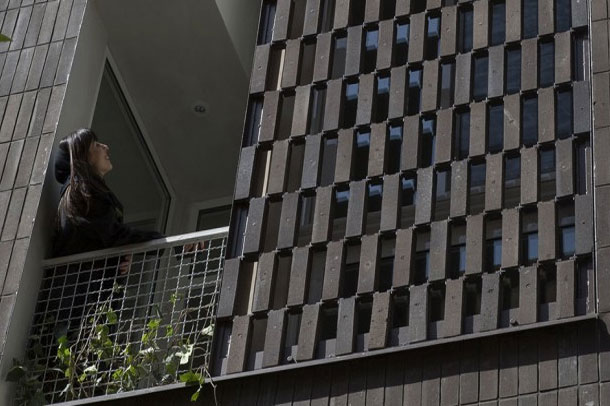
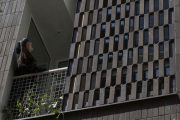




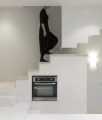







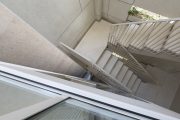






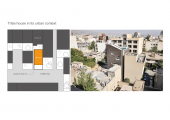
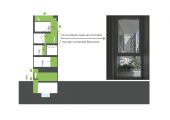



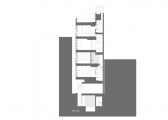

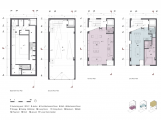
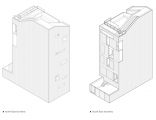
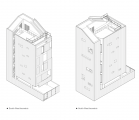
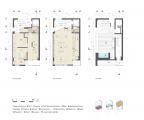

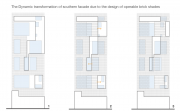
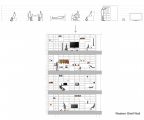
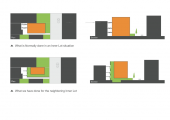
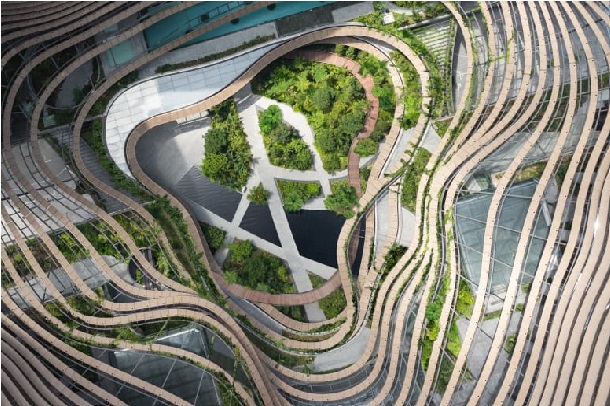
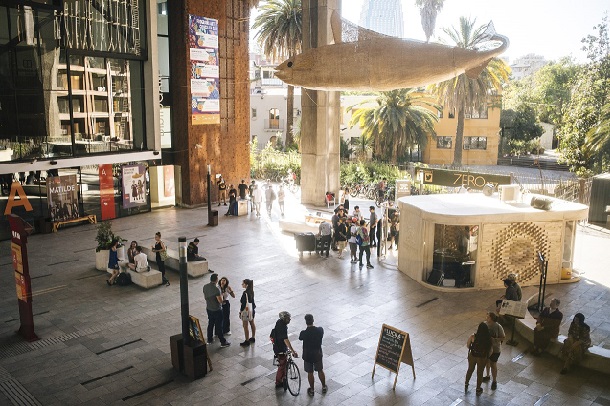
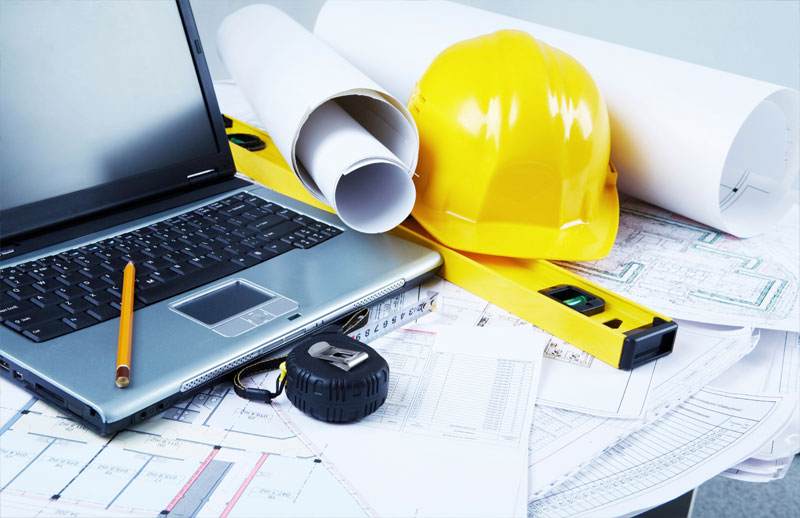
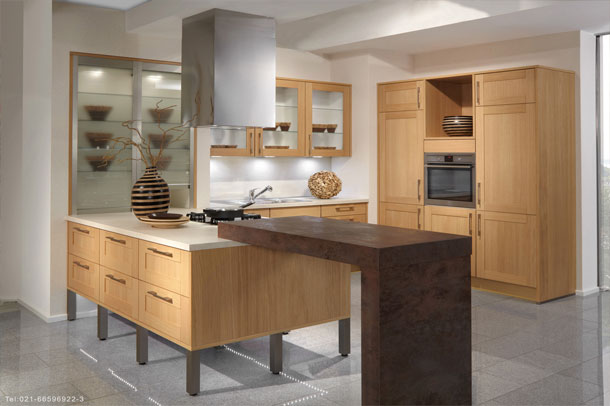
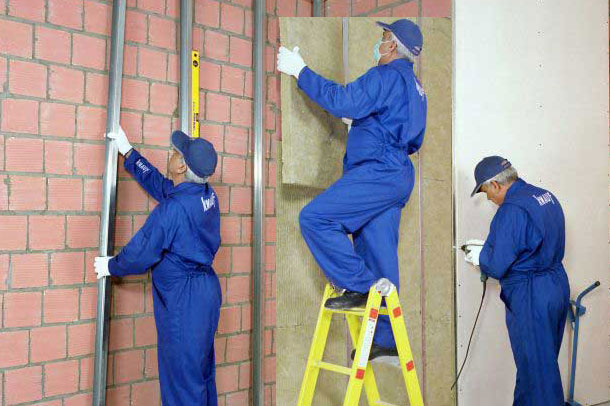

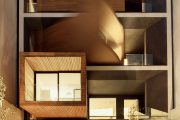


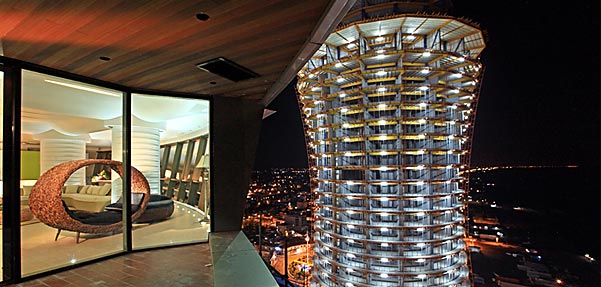




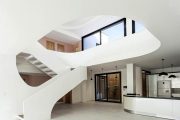

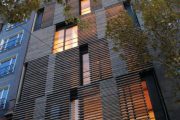
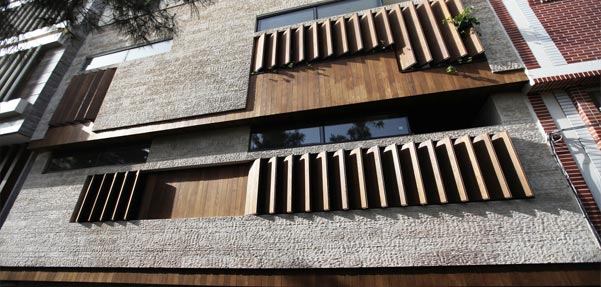

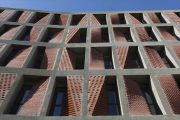

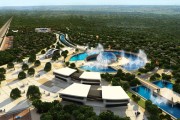


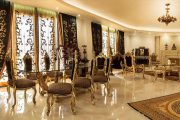

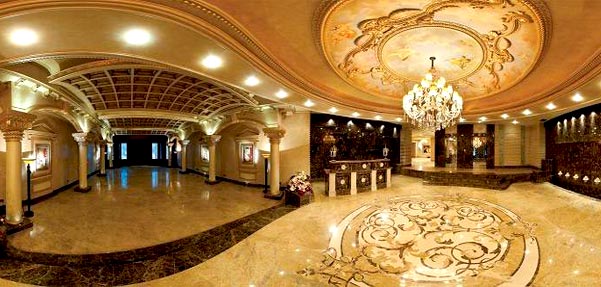
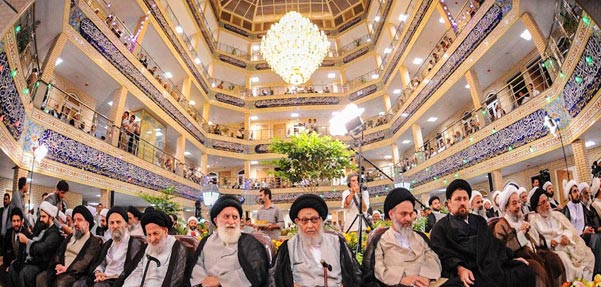

1 Comments
ناشناس
فوق العاده هست